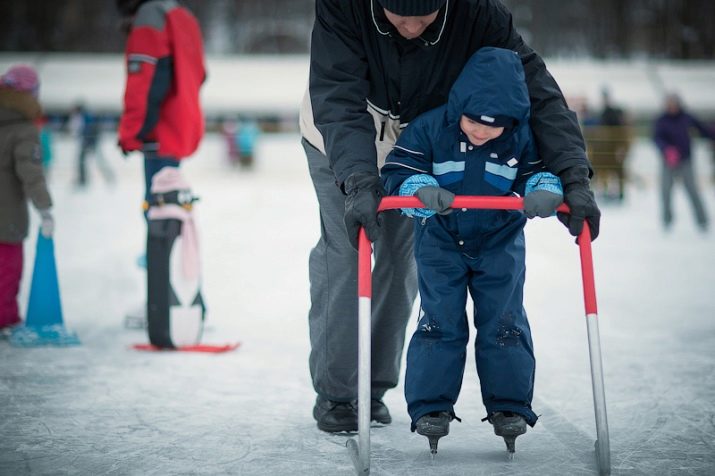Ice skating supports
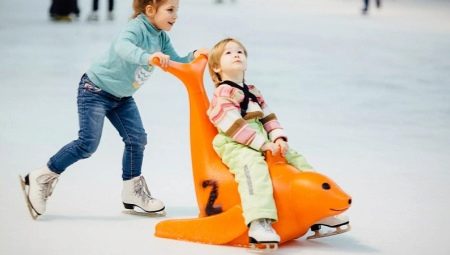
The popularization of hockey and figure skating in our country has led to the fact that more and more people dream of learning how to ice skate. To facilitate this process, to make it safer to be on the ice, it is imperative to use ski supports. Moreover, now they can both be found at organized skating rinks, and made independently for training in any convenient place.


Description and purpose
Take care of the support before going out on the ice for the first time. First of all, this is due to the complexity - not everyone can maintain balance the first time and understand the sliding technique. And also such a holder will help to avoid the consequences of falls, which rarely can anyone avoid at first. Specially designed supports have a number of advantages:
- opportunity for a child explore the space of the rink on your own, try your hand;
- mobility - they do not restrict movement over the area of the skating rink (in contrast to the side or other stationary objects);
- sustainability - have sufficient weight so as not to roll over (while a falling person can carry with him the one who supports him);
- made made of durable materials;
- have attractive appearance and comfortable handrails;
- you can choose a model in accordance with the parameters of the trainee.
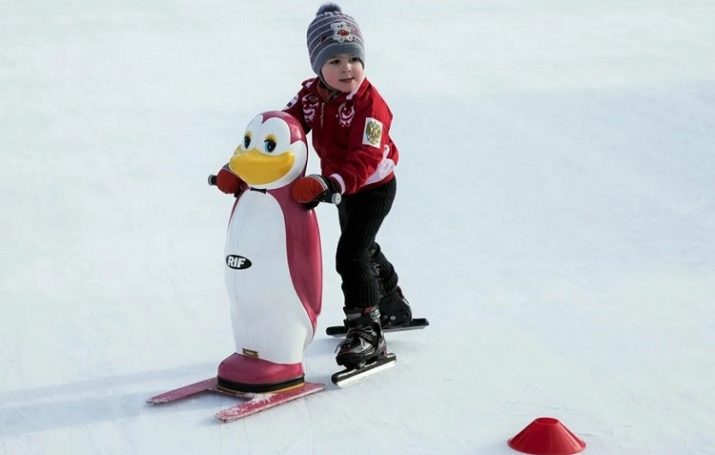
In fact, the supports act as an assistant for the development of the necessary skill and the development of muscle memory. However, in practice, it turns out that not all skating rinks have the required number of racks for support, and they are usually rented out on a rental basis.
The good news is that, as a rule, support is required for a relatively short time - having got used to it, beginners try their hand on their own, and after 2-3 visits to the rink, they completely abandon it.

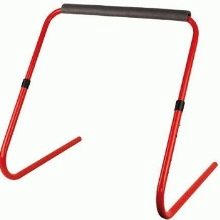
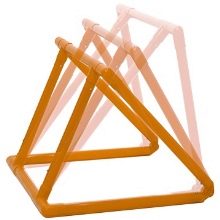
Varieties
First of all, all ice skating supports can be divided into two large groups.
- For kids. Now the optimal age for training is considered to be from 4 to 7 years. The sizes of the stands differ slightly from different manufacturers. The height of children's devices varies from 55 to 90 cm.
- For adults. There are no special models for this age group, but they are easy to make with your own hands from inexpensive materials.
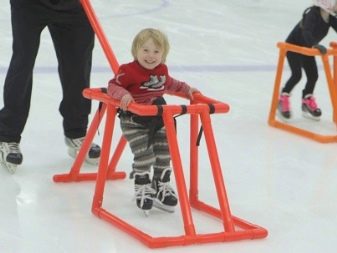
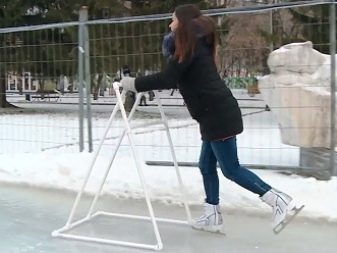
The appearance of skating supports can also vary greatly.
- In the form of animal figures. This variety is most often seen on ice rinks. The popularity is explained not only by the pleasant appearance, which arouses the interest of kids, but also by its stability and safety. The figure of a penguin, polar bear or even a snowman has runners for movement, handles on the sides and weighs from 15 to 25 kg, depending on the model. Some of them (for example, the dolphin) are equipped with a seat on which you can carry your child on the ice for fun or relaxation.

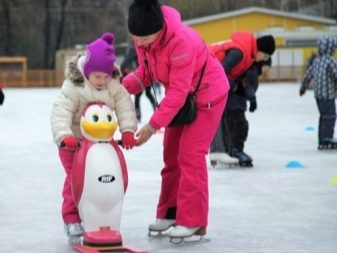
- In the form of racks. In this version there are both very simple models in the form of a kind of crossbar, and supports with sides, which protect against careless interference from other visitors to the rink and provide additional stability. There are even supports with a handle for the coach or parent, with which the little ones can facilitate movement and control the pace. They are made of brightly colored metal or plastic. A characteristic feature of some models is a sliding design that allows you to adjust the height of the posts.
In addition to the above, the supports can be fixed or collapsible, the advantage of which is their compactness and the ability to replace any part. There are also foldable models that are easier to store and transport.
Additional features to transform inventory add value but make it more efficient.
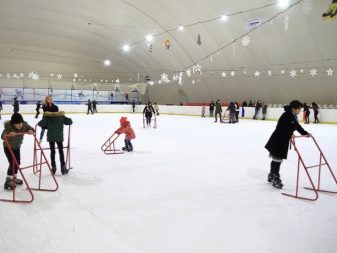

Secrets of choice
Before you start learning how to ice skate, you need to make sure that there are supports on the rink for support or take care of this yourself. If you have a choice, you need to take into account several nuances at once that will affect the comfort while moving.
- The height from the ice surface to the handles should correspond to the height of the beginner, namely: the distance to the armpits or palms extended forward (taking into account the skates). In this regard, height-adjustable models are more convenient.
- The weight of the support must be sufficient to maintain stability.but do not slow down or exert extra effort.
- To ensure that the child or adult can maintain balance as a result of too abrupt movements and avoid falling, the structure should have a wide base. But at the same time, the bulky support must be maneuverable.
- Metal frames are more reliable and durable than plastic ones, but they also weigh accordingly. A person with a dense physique needs more reliable support.
- The control of the chosen model should be simple and enjoyable. Any little things are important here - from the convenience of the handles-holders to the ease of sliding on the ice.
It should be understood that if the support is chosen incorrectly, the benefits from it will be much less than harm, since the person will be busy not with mastering the technique, but with adapting to uncomfortable equipment, and will get tired much earlier without achieving any result.
